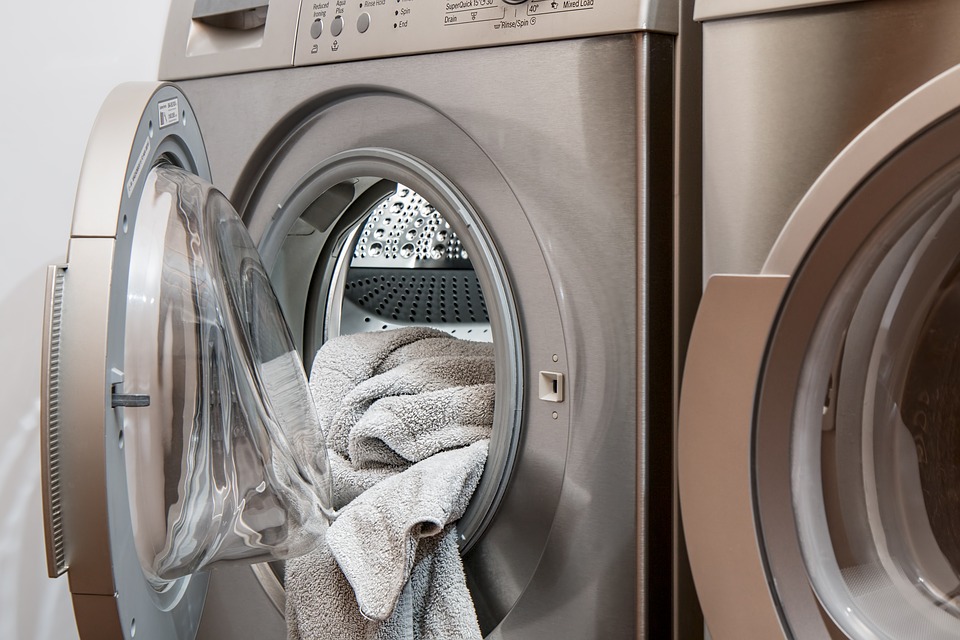Limiting Household Appliances’ Energy Use Can Save You Big Bucks!

Photo Credit: http://ow.ly/SQGS30j5gio

Photo Credit: http://ow.ly/SQGS30j5gio
To create strong passwords, you have to strike a balance between making them difficult for others to guess and making them easy enough for you to remember. Many people favor simple ones at their own risk: “123456” and “password” have remained the two most common passwords for six years, according to password security company SplashData.
Unlike many other security measures on websites, a password is one you have full control over. And given that over 1,000 data breaches happened in 2017 alone, according to the Identity Theft Resource Center, it might be time to strengthen your passwords. Here’s how.
1. Start with a sentence
Despite the “word” in “password,” it’s better to think of starting with multiple words. Some websites require only six or eight characters for passwords, but that doesn’t mean it’s a recommended length.
» MORE: How to make online banking more secure
When it comes to passwords, “longer is better,” says Richard Crone, a payments expert and CEO of Crone Consulting LLC. “And the way to do that is to use a sentence structure.”
Pick a sentence that’s memorable but doesn’t have details that relate too closely to you. Avoid using birthdays or the names of pets or family members, and feel free to be creative. Here’s an example: “cats do not like cucumbers.” Then, take out the spaces, “catsdonotlikecucumbers.”
“It’s really the length and the unrelatedness that gives you the best protection,” Crone says.
2. Avoid using real words
Change how your sentence looks by removing all the vowels, or only use the first one or two letters of each word. Don’t use dictionary words, which makes your password easier to guess.
The previous example becomes “cadonolicu” if you’re using the first two letters of every word in that sentence.
3. Mix in numbers, symbols and uppercase letters
Bring in a variety of characters to your password. Some websites have minimum requirements so you need to use at least one capital letter, one lowercase letter and a number. You might have to add a symbol like a period or exclamation point, too. As you mix it up, don’t repeat letters, numbers or symbols right next to each other.
By capitalizing some letters, replacing the “l” with an exclamation point and turning an “o” into a zero, the sample password becomes “CaD0No!icU.”
Use a password manager
The steps above help when you’re creating one really strong password, but remembering a dozen or more such passwords might make your head spin. That’s why you might want to consider using a password manager such as LastPass or Dashlane. There are free options, but some features are available only for purchase.
Think of a password manager as a bank vault that creates and stores long and complex passwords so you don’t have to. The only password to know is the one that unlocks the vault. Once you type that one, you can log into whatever online accounts you decide to keep on the password manager.
If you don’t use an online password manager, consider writing down complex passwords and storing them in a safe place such as a locked cabinet at home or in an encrypted file on your computer. These passwords should be difficult to access as well as to guess.
A password is “like scrambled eggs,” Crone says. “The more you fluff it up and spice it up, the better.”
More From NerdWallet
The article 3 Steps to Strong Passwords You Can Remember originally appeared on NerdWallet.
Connect with us on Facebook, Instagram, Twitter, or YouTube!

Photo Credit: http://ow.ly/MP2m30gxTCA
A: You’re actually on the receiving end of great advice. When looking to take out a large loan, whether it’s for purchasing a home or buying a car, having that preapproval in hand before you start your search is crucial.
1.) You’ll know what you can afford
2.) Don’t get taken for a ride
3.) Be taken seriously
4.) Know you have financing you can trust
5.) Purchase your dream home

Photo Credit: https://pixabay.com/en/money-home-coin-investment-2724241/
For planned savings, share certificates (aka “savings certificates” or “certificates”) are a great option. They allow you to earn a pretty good return on your money while keeping it accessible enough to use for major expenses. If you’re planning on buying a house or a car, keeping your down payment money in a certificate can help it grow toward your goal a little faster.
 ICU Day – celebrated on the third Thursday of every October since 1948 – will be on October 19, 2017. The day has been designated as an occasion for credit unions all over their world to recognize the history behind the credit union movement, its spirit and its philosophy. It’s a day to share your experiences as a member and to reflect upon all the benefits you enjoy by being a part of your credit union.
ICU Day – celebrated on the third Thursday of every October since 1948 – will be on October 19, 2017. The day has been designated as an occasion for credit unions all over their world to recognize the history behind the credit union movement, its spirit and its philosophy. It’s a day to share your experiences as a member and to reflect upon all the benefits you enjoy by being a part of your credit union.
It’s also a day to have fun! Credit unions vary in how they commemorate the day, with celebrations that may include parades, picnics, contests, fundraisers or free promotional materials at the credit union’s local branch. At our credit union, we’re planning to a whole day of fun!
Each year, CUNA and the World Council of Credit Unions chooses a theme for ICU Day. The theme for 2017, selected via an online poll of credit union professionals, is “Dreams Thrive Here.” As a credit union member, you can testify to the absolute truth of this statement. Credit unions do help your dreams thrive, because they make them possible.
You already know how wonderful it is to be part of a credit union, but in the spirit of ICU Day, let’s take a quick look at four factors that make a credit union outstanding and allow your dreams to thrive.
As a member of a credit union, you own a piece of the organization. Credit unions are not stuck answering to Wall Street – we only want what’s best for you. This keeps our focus in the right place. Instead of working on earning the biggest profits, we can focus on offering superior member service and policies that are as member-friendly as possible. You’ll have a say in the way your credit union runs, and if you find yourself in a difficult situation, you’ll find representatives who are willing and happy to help you.
Banks earn a significant portion of their profits through their fees. While a credit union will also have fees attached to certain products and services, these tend to be lower than similar fees you’ll find in a bank. What all this means for you is lots of money saved just by choosing to trust the credit union with your money.
Everyone has their ups and downs. If you’re going through a rough patch, a credit union is willing to work with you through that challenging time. While a bank is more likely to turn down a borrower with a poor credit history, a credit union member representative wants to help you out. Loan officers will be happy to meet with you and work to find a loan that best suits your needs. If necessary, representatives are also here to help you learn the basics of budgeting and money management, often offering programs to help you gain control over your budget and cover unexpected expenses.
When you open a savings account or a CD, one of your biggest concerns is the interest rate. You want your money to grow as much as possible.
Lucky for you, credit unions offer higher interest rates on savings accounts and lower interest rates on loans. You read that right – remember, they want what’s best for you! Since they’re not focused on making a profit, they only need to cover operating costs. All the money they save by focusing on what matters to you is passed down to the member via these favorable interest rates. This means you can save on any loans you may need and that the money in your savings accounts will be earning at a higher rate, just because you chose 705 Federal Credit Union.
As you can see, we’ve got lots to celebrate!
SOURCES:
https://www.woccu.org/networking_education/icuday
https://www.woccu.org/newsroom/releases/2017_International_Credit_Union_Day_Theme_Announced
https://www.cuna.org/Marketing-And-Member-Education/Member-Events-And-Promotions/International-Credit-Union-Day/International-Credit-Union-Day/
https://www.cuinsight.com/press-release/2017-international-credit-union-day-theme-announced

That long-anticipated day has finally come and gone. Your kids looked sharp and neat sporting spiffy backpacks and dressed in their spanking new back-to-school clothing. You watched them board that bus and waved them off from your perch at the bus stop until your arm hurt.



Equal Housing Lender. Federally Insured by NCUA.
CONSTRUCTION UPDATE: Pardon the progress! The drive thru will be under construction starting on Saturday, July 27, 2024 through August 2, 2024. The drive thru will be closed during this time. We appreciate your patience as we move closer to the completion of this project. The night drop and ATM will still be available for deposits and loan payments. Please, put your cash or check in an envelope if utilizing the night drop or ATM. As always, do not hesitate to reach out with any financial needs!